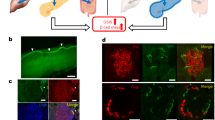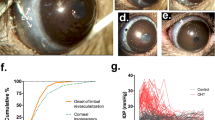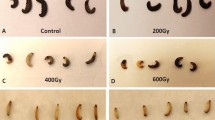Abstract
THERE have been a number of reports in recent months of experiments in which animals have been exposed to chemical carcinogenic agents during the neonatal period1–6. It is probable that, on the basis of dose per unit of body-weight, newly born animals are particularly sensitive to tumour-induction. For example, lung tumours may be very readily induced in mice by the neonatal injection of small doses of certain weakly carcinogenic agents4. Because of this high sensitivity, the use of newly born animals for screening for carcinogenicity has been suggested3. Of possibly even greater interest, however, is the fact that animals injected when newly born with carcinogenic agents develop varieties of neoplasms not seen when the same agents are injected into adults of the same species and strain. For example, newly born ‘101’ strain mice injected with small doses of 9,10-dimethyl-1,2-benz-anthracene developed kidney tumours3. A further example of this type of phenomenon has recently come to light in an experiment in which rats were injected during the neonatal period with urethane (ethyl carbamate).
This is a preview of subscription content, access via your institution
Access options
Subscribe to this journal
Receive 51 print issues and online access
$199.00 per year
only $3.90 per issue
Buy this article
- Purchase on Springer Link
- Instant access to full article PDF
Prices may be subject to local taxes which are calculated during checkout
Similar content being viewed by others
References
Pietra, G., Spencer, K., and Shubik, P., Nature, 183, 1689 (1959).
Pietra, G., Rappaport, H., and Shubik, P., Cancer, 14, 308 (1961).
Roe, F. J. C., Rowson, K. E. K., and Salaman, M. H., Brit. J. Cancer, 15, 515 (1961).
Roe, F. J. C., Mitchley, B. C. V., and Walters, M., Brit. J. Cancer, 17, 255 (1963).
Fiore-Donati, L., Chieco-Bianchi, L., De Benedictus, G., and Maiorane, G., Nature, 190, 278 (1961).
Kelly, M. G., and O'Gara, R. W., J. Nat. Cancer Inst., 26, 651 (1961).
Tannenbaum, A., and Maltoni, C., Cancer Res., 22, 1105 (1962).
Tannenbaum, A., Vesselinovitch, S. D., Maltoni, C., and Mitchell, D. S., Cancer Res., 22, 1362 (1962).
Haddow, A., in Dr. Khanolkar Souvenir Volume (Indian Cancer Research Centre, Bombay, 1963) (in the press).
Della Porta, G., Rappaport, H., Saffiotti, U., and Shubik, P., Amer. Med. Assoc. Arch. Path., 61, 305 (1956).
Pietra, G., and Shubik, P., J. Nat. Cancer Inst., 25, 627 (1960).
Nakai, T., and Rappaport, H., Nat. Cancer Inst. Monog. No. 10, 297 (1962).
Fordner, J. G., and Allen, A. C., Cancer Res., 18, 98 (1958).
Hartwell, J. L., Survey of Compounds which have been Tested for Carcinogenic Activity (U.S. Gov. Printing Office, Washington, D.C., 1951).
Shubik, P., and Hartwell, J. L., Survey of Compounds which have been Tested for Carcinogenic Activity, Supp. 1 (U.S. Gov. Printing Office, Washington, D.C., 1957).
Reese, A. B., Tumors of the Eye (Cassell, London, 1951).
Ilif, C. E., and Ossofsky, H. J., Tumors of the Eye and Adnexia in Infancy and Childhood (Thomas, Springfield, Illinois, 1962).
Zimmerman, L. E., Amer. J. Clin. Path., 39, 214 (1963).
Author information
Authors and Affiliations
Rights and permissions
About this article
Cite this article
ROE, F., MILLICAN, D. & MALLETT, J. Induction of Melanotic Lesions of the Iris in Rats by Urethane given during the Neonatal Period. Nature 199, 1201–1202 (1963). https://doi.org/10.1038/1991201a0
Issue Date:
DOI: https://doi.org/10.1038/1991201a0
Comments
By submitting a comment you agree to abide by our Terms and Community Guidelines. If you find something abusive or that does not comply with our terms or guidelines please flag it as inappropriate.



